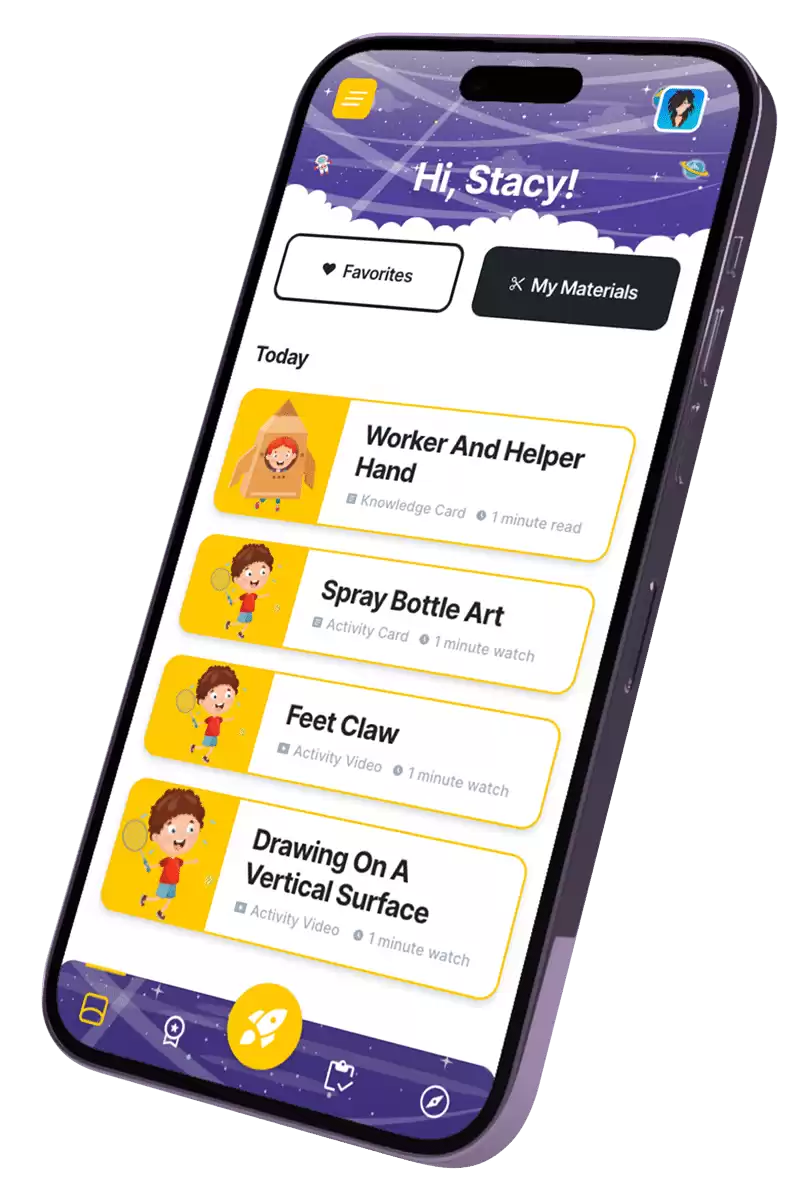Hand-eye coordination activities play a crucial role in developing fine motor skills and enhancing overall coordination. These activities are not only fun, but they also provide numerous benefits for children. By engaging in hand-eye coordination activities, children can improve their ability to synchronize their visual input with their physical movements, leading to better control and precision.
Whether your child is just starting to explore their coordination skills or is already older, there are a variety of activities that can help them develop their hand-eye coordination. From playing catch with a ball to threading and lacing, each activity offers unique challenges that promote the development of fine motor skills.
Key Takeaways:
- Hand-eye coordination activities are essential for developing fine motor skills and overall coordination.
- Engaging in hand-eye coordination activities helps children synchronize their visual input with physical movements.
- Activities like playing catch and threading promote the development of fine motor skills.
- Start with easier activities and gradually increase the difficulty level to ensure progress.
- If your child is struggling with hand-eye coordination, seeking professional help is important for assessment and guidance.
Understanding Hand-Eye Coordination and Its Importance
Hand-eye coordination, also referred to as eye-hand coordination, is the ability to coordinate visual input with hand movements, allowing for precise and coordinated actions. This crucial skill plays a fundamental role in our daily lives, enabling us to perform tasks that require the synchronization of our eyes and hands. Whether it’s writing, playing a musical instrument, or participating in sports, hand-eye coordination skills are essential for success.
When our eyes perceive visual information, such as the location and movement of objects, our brains process this data and send signals to our hands to execute the necessary movements. Without effective hand-eye coordination, our movements may lack precision and accuracy, impacting various aspects of our lives.
Developing hand-eye coordination skills is particularly important during childhood. It lays the foundation for future motor skill development and cognitive abilities. By engaging in activities that require hand-eye coordination, children can refine their fine motor skills, enhance their problem-solving abilities, and improve their overall coordination.
| Activities for Younger Kids | Activities for Older Kids |
|---|---|
| Rolling a ballPlaying object relaysPassing and gentle tossing | Ball-wall tossTossing and catchingThreading and lacing |
Engaging in activities that promote hand-eye coordination is not limited to children alone. Individuals of all ages can benefit from such activities. Playing with musical toys, using tongs and tweezers, and rolling balls are just a few examples of activities that can be enjoyed by both children and adults alike. By gradually increasing the difficulty level of these activities, one can continue to improve their hand-eye coordination skills.
The Role of Professionals
In some cases, individuals may struggle with hand-eye coordination challenges that require professional assistance. Occupational therapists and other professionals can assess visual input, identify areas of difficulty, and design customized activities to address these challenges effectively. Seeking professional help can provide valuable guidance and support in improving hand-eye coordination skills.
| Recommended Tools | Activities |
|---|---|
| Tennis balls Tissue paper Pipe cleaners | Playing catch Tearing tissue paper Using pipe cleaners for threading |
Benefits of Developing Hand-Eye Coordination in Children
Developing hand-eye coordination skills in children is crucial as it aids in the development of problem-solving abilities and fine motor skills. Hand-eye coordination plays a vital role in everyday activities such as writing, drawing, and using utensils. By engaging in hand-eye coordination activities, children can improve their ability to track objects visually and coordinate their movements effectively.
The benefits of developing hand-eye coordination extend beyond basic motor skills. It also enhances cognitive functions such as attention, concentration, and spatial awareness. These skills are essential for academic success as they support tasks like reading, writing, and problem-solving.
One way to develop hand-eye coordination in children is through a variety of activities. For younger kids, rolling a ball, playing object relays, and passing and gentle tossing can help improve coordination and motor skills. Older kids can try ball-wall toss, tossing and catching, and threading and lacing activities to challenge their hand-eye coordination.
| Hand-Eye Coordination Activities for Younger Kids | Hand-Eye Coordination Activities for Older Kids |
|---|---|
| Rolling a ball Playing object relays Passing and gentle tossing | Ball-wall toss Tossing and catching Threading and lacing |
Other activities that can enhance hand-eye coordination in children include playing with musical toys, using tongs and tweezers, and rolling balls. These activities provide sensory stimulation and encourage the development of fine motor skills, strengthening the connection between the hands and eyes.
It is important to introduce hand-eye coordination activities at an early age and gradually increase the difficulty level. By starting with easier activities and progressively challenging the child, they can develop a solid foundation for their hand-eye coordination skills. Additionally, if a child has persistent difficulties with hand-eye coordination, seeking professional help from occupational therapists or other specialists can provide valuable support and guidance.
| Hand-Eye Coordination Activities for Younger Kids | Hand-Eye Coordination Activities for Older Kids |
|---|---|
| Rolling a ball | Ball-wall toss |
| Playing object relays | Tossing and catching |
| Passing and gentle tossing | Threading and lacing |
Hand-Eye Coordination Activities for Younger Kids
Younger kids can benefit from a variety of hand-eye coordination activities that include playing catch, using smaller balls, and participating in sports. These activities not only enhance their coordination skills but also promote their overall motor development. By engaging in these fun and interactive activities, younger children can improve their hand-eye coordination in a playful and enjoyable manner.
One of the simplest and most effective activities for younger kids is playing catch. Whether it’s with a soft ball or a beanbag, playing catch helps them develop their hand-eye coordination by focusing on the ball and coordinating their movements to catch it. Another option is using smaller balls that are easier for their little hands to grasp and throw, allowing them to practice their hand-eye coordination skills more comfortably.
Participating in sports is another excellent way for younger kids to develop hand-eye coordination. Sports like basketball, soccer, or t-ball require them to track the movement of the ball, judge its speed and trajectory, and coordinate their actions accordingly. These sports not only strengthen their hand-eye coordination but also foster teamwork, social skills, and physical fitness.
Hand-Eye Coordination Activities for Younger Kids
To summarize, playing catch, using smaller balls, and participating in sports are all fantastic hand-eye coordination activities for younger kids. These activities help them improve their coordination skills and fine-tune their motor abilities. By engaging in these activities regularly, younger children can enhance their hand-eye coordination in a fun and engaging way, setting a strong foundation for their future development.
| Activity | Description |
|---|---|
| Playing Catch | Throwing and catching a soft ball or beanbag to improve hand-eye coordination. |
| Using Smaller Balls | Practicing with smaller balls that are easier for younger kids to handle and control. |
| Participating in Sports | Engaging in sports like basketball, soccer, or t-ball to develop hand-eye coordination and other essential skills. |
Hand-Eye Coordination Activities for Older Kids
Older kids can enhance their hand-eye coordination through activities such as playing video games, engaging in coordinated movements, and exploring eye-hand coordination ideas. Video games that require quick reflexes and precise movements can help improve hand-eye coordination in a fun and interactive way. These games often involve tracking objects on the screen and responding with accurate hand movements, which can sharpen visual perception and motor skills.
Coordinated movements, such as dancing or practicing martial arts, can also be beneficial for improving hand-eye coordination. These activities require individuals to synchronize their visual input with precise body movements, leading to enhanced coordination between the eyes and hands. Additionally, eye-hand coordination ideas like juggling or playing with hand-eye-coordination toys can provide further opportunities for older kids to develop their skills.
To supplement these activities, it can be helpful to introduce simple tools and equipment. For example, using a tennis ball and a wall to practice ball-wall toss can improve hand-eye coordination and timing. Tossing and catching games, such as catching a ball with one hand or using a racquet, can also enhance coordination and hand-eye skills. Threading and lacing activities with beads or strings can further refine fine motor control and hand-eye coordination.
Remember, it is important to gradually progress the difficulty level of hand-eye coordination activities to maintain a challenge while ensuring success. Starting with easier tasks and gradually increasing the complexity allows older kids to build their skills and confidence over time. If a child continues to struggle with hand-eye coordination challenges, it is recommended to seek professional help. Occupational therapists, for example, can assess visual input and design appropriate activities to improve hand-eye coordination skills.
| Hand-Eye Coordination Activities for Older Kids |
|---|
| Playing video games |
| Engaging in coordinated movements |
| Exploring eye-hand coordination ideas |
| Practicing ball-wall toss |
| Tossing and catching games |
| Threading and lacing activities |
To summarize, older kids can improve their hand-eye coordination by playing video games, engaging in coordinated movements, and exploring eye-hand coordination ideas. These activities can help develop their visual perception, motor skills, and fine motor control. Remember to gradually increase the difficulty level, and seek professional help if needed to address any persistent hand-eye coordination challenges.
Hand-Eye Coordination Activities for All Ages
Hand-eye coordination activities are not limited to children; individuals of all ages can benefit from engaging in activities that challenge their coordination and motor skills. These activities not only provide entertainment but also help enhance cognitive abilities and physical dexterity. Regardless of age, it is important to incorporate hand-eye coordination exercises into daily routines to promote overall well-being.
One activity that can be enjoyed by both young and old is tissue paper tearing. This simple yet effective exercise involves tearing tissue paper into smaller pieces, improving fine motor skills and hand-eye coordination. It can be done individually or as a group activity, allowing for social interaction and fostering a sense of accomplishment.
Another enjoyable and beneficial activity is hula hoop play. Grab a hula hoop and challenge yourself to keep it spinning around your waist, arms, or legs. This activity requires precise hand-eye coordination and body control, making it a fun way to improve coordination skills while staying active.
To add a playful element to your hand-eye coordination practice, engage in a friendly pillow fight. Grab a soft pillow and start gently hitting it back and forth with a partner. This activity not only improves hand-eye coordination but also promotes laughter and social bonding. Remember to keep it light-hearted and safe for everyone involved.
| Hand-Eye Coordination Activities for All Ages |
|---|
| Tissue paper tearing |
| Hula hoop play |
| Friendly pillow fight |
Summary:
Hand-eye coordination activities are not limited to children; individuals of all ages can benefit from engaging in activities like tissue paper tearing, hula hoop play, and friendly pillow fights. These activities help improve coordination, motor skills, and cognitive abilities while providing entertainment and social interaction. By incorporating these activities into daily routines, people of all ages can enhance their hand-eye coordination and enjoy the numerous benefits it brings.
Improving Hand-Eye Coordination through Everyday Tasks and Tools
Improving hand-eye coordination can be achieved through everyday tasks and tools, such as playing catch with tennis balls and engaging in simple tasks that challenge the visual system. These activities help develop the connection between what the eyes see and how the hands respond, promoting coordination and motor skills.
The use of tennis balls is a great way to enhance hand-eye coordination. By playing catch, tossing the ball back and forth, individuals can improve their ability to track and catch moving objects. This activity also helps in developing hand-eye synchronization and reaction time.
Engaging in simple tasks that challenge the visual system can further enhance hand-eye coordination. These tasks can include throwing and catching objects of different sizes, practicing aiming skills, or even playing with puzzles and building blocks. By providing visual input and requiring coordinated movements, these activities strengthen the connection between the eyes and hands.
Table: Hand-Eye Coordination Activities with Tennis Balls
| Activity | Description |
|---|---|
| Throw and Catch | Stand a few feet apart and take turns throwing and catching a tennis ball. Vary the distance and speed to challenge coordination. |
| Target Practice | Set up targets of different sizes and distances. Use tennis balls to aim and throw at the targets, improving precision and accuracy. |
| Ball Wall Toss | Stand facing a wall and throw the tennis ball against it. Catch it or let it bounce back, challenging reaction time and hand-eye coordination. |
Remember, it is essential to start with easier activities and gradually increase the difficulty level. This allows individuals to build their hand-eye coordination skills progressively. If you or your child are experiencing challenges with hand-eye coordination, seeking professional help from occupational therapists or other experts in the field can provide valuable guidance and customized exercises to address specific needs.
By incorporating everyday tasks and tools into practice, individuals can improve their hand-eye coordination and enhance their overall motor skills. Whether it’s playing catch with tennis balls or engaging in other simple activities, consistent practice and patience are key to developing this important skill.
Enhancing Hand-Eye Coordination with Fine Motor Activities
Fine motor activities, such as using pipe cleaners and threading beads, are excellent for enhancing hand-eye coordination. These activities require precise hand movements and visual tracking, which stimulate the coordination between the eyes and hands. The use of pipe cleaners allows children to practice their fine motor skills by bending and shaping the wires, while threading beads onto a string encourages them to focus on hand-eye coordination as they guide the beads through the narrow hole.
One fun fine motor activity is creating a bead necklace using different colored beads. This activity not only improves hand-eye coordination but also fosters creativity and concentration. Children can use their imaginations to design unique patterns and shapes with the beads, and as they thread each bead onto the string, they develop their fine motor skills and hand-eye coordination.
Another great fine motor activity is manipulating pipe cleaners to create various shapes and figures. Children can bend and twist the pipe cleaners to make animals, flowers, or even abstract sculptures. This activity not only enhances hand-eye coordination but also improves dexterity and finger strength.
| Pipe Cleaner Shapes | Description |
|---|---|
| Snake | Bend the pipe cleaner back and forth to create a wiggly snake shape. |
| Flower | Twist the pipe cleaner into a circle and then fold the ends into petals. |
| Butterfly | Create a “V” shape with the pipe cleaner for the body and twist the remaining ends to form the wings. |
Engaging in fine motor activities with pipe cleaners and threading beads not only improves hand-eye coordination but also provides a fun and creative outlet for children. These activities can be easily incorporated into daily routines and offer valuable opportunities for skill development in a playful and enjoyable way.
The Importance of Gradual Progression in Hand-Eye Coordination Activities
Gradual progression is key in hand-eye coordination activities, with transfer practice and engaging in great games from an early age contributing to skill development. Hand-eye coordination is an important skill that can be developed through various activities, and it is crucial to start with easier tasks and gradually increase the difficulty level.
For younger kids, activities like rolling a ball, playing object relays, and passing and gentle tossing can help improve their hand-eye coordination. These simple tasks allow children to practice tracking moving objects and coordinating their movements to catch or throw the ball.
Older kids can benefit from activities like ball-wall toss, tossing and catching, and threading and lacing. These activities require more precision and accuracy, challenging their hand-eye coordination skills while also engaging their focus and concentration.
| Hand-Eye Coordination Activities for Younger Kids | Hand-Eye Coordination Activities for Older Kids |
|---|---|
| Rolling a ball | Ball-wall toss |
| Playing object relays | Tossing and catching |
| Passing and gentle tossing | Threading and lacing |
Additionally, it is important to incorporate a variety of activities that enhance hand-eye coordination. Playing with musical toys that require pressing buttons or keys, using tongs and tweezers to pick up small objects, and rolling balls towards targets can all help develop hand-eye coordination skills.
Hand-eye coordination problems should be addressed by professionals if necessary. Occupational therapists can assess the child’s visual input and design individualized activities to improve hand-eye coordination. Seeking professional help early on can ensure that children receive the support they need to develop this important skill.
By gradually progressing through hand-eye coordination activities and incorporating transfer practice and engaging games, individuals of all ages can improve their hand-eye coordination skills. Whether it’s rolling a ball, tossing and catching, or using tongs and tweezers, each activity contributes to the development of this crucial skill.
Seeking Professional Help for Hand-Eye Coordination Challenges
If a child consistently struggles with hand-eye coordination challenges, it is important to seek professional help for a thorough assessment of visual input and tailored activities. Many children may experience difficulties in hand-eye coordination, which can impact their ability to perform everyday tasks and participate in activities that require precise motor skills. Consulting with an occupational therapist or a developmental specialist can provide valuable insights into the underlying causes of these challenges and guide the development of appropriate interventions.
An occupational therapist or developmental specialist will conduct a comprehensive evaluation to assess a child’s visual input and hand-eye coordination skills. This evaluation may include tests to evaluate visual perception, tracking abilities, and hand-eye coordination. Based on the assessment results, the professional will develop a customized treatment plan that targets the specific needs of the child.
The treatment plan may involve a combination of therapeutic activities, exercises, and strategies to improve hand-eye coordination skills. These interventions could include activities to enhance visual tracking, hand-eye coordination exercises using various tools and toys, and the implementation of adaptive techniques to facilitate the development and improvement of hand-eye coordination skills.
| Treatment Options | Benefits |
|---|---|
| Visual tracking exercises | Improves the ability to visually follow objects and enhance eye movement control. |
| Hand-eye coordination games | Enhances coordination and motor skills through engaging activities and challenges. |
| Adaptive techniques | Allows the child to engage in activities while compensating for specific motor difficulties. |
| Sensory integration activities | Facilitates the integration of visual and motor information for improved coordination. |
With the guidance of a professional, children can make significant progress in developing their hand-eye coordination skills. The professional will closely monitor the child’s progress and make any necessary adjustments to the treatment plan as needed. By addressing hand-eye coordination challenges early on and providing appropriate interventions, children can build the foundations for success in various activities and tasks that require precise visual-motor coordination.
Are Hand-Eye Coordination Activities Suitable for Newborn Babies?
Hand-eye coordination activities are not suitable for newborn babies. At this stage, their vision is still developing, and their motor skills are limited. Instead, engage in gentle interactions, provide visual stimulation, and encourage tummy time. Play ideas for newborn babies include using black and white contrasting toys and talking to them softly.
Conclusion
Hand-eye coordination activities offer a wide range of benefits and can significantly improve this important skill in individuals of all ages. Whether you are a young child developing your motor skills or an adult looking to enhance your coordination abilities, engaging in these activities can make a significant impact.
For younger kids, rolling a ball, playing object relays, and passing and gentle tossing are great options to improve hand-eye coordination. Older kids can try activities like ball-wall toss, tossing and catching, and threading and lacing. These activities not only enhance hand-eye coordination but also promote concentration and focus.
In addition to specific activities, playing with musical toys, using tongs and tweezers, and rolling balls can also contribute to the development of hand-eye coordination. These activities engage multiple senses and require precise hand movements, which help strengthen the connection between the eyes and the hands.
It is important to start with easier activities and gradually increase the difficulty level as skills improve. This gradual progression allows for the development of foundational skills and ensures sustained growth. However, if a child or individual continues to struggle with hand-eye coordination, it is essential to seek professional help. Occupational therapists and other specialists can assess visual input and develop a customized plan to address specific challenges.
So, whether you’re picking up a ball, threading beads, or engaging in everyday tasks that challenge your coordination, the benefits of hand-eye coordination activities are undeniable. Take the time to incorporate these activities into your daily routine, and watch as your hand-eye coordination skills improve and thrive.
FAQ
Q: What is hand-eye coordination?
A: Hand-eye coordination is the ability to synchronize visual input with coordinated movements of the hands and fingers.
Q: Why is hand-eye coordination important?
A: Hand-eye coordination is important as it allows individuals to perform daily tasks, participate in sports, and engage in activities that require precise movements.
Q: How can hand-eye coordination be developed in children?
A: Hand-eye coordination in children can be developed through various activities such as playing catch, using smaller balls, engaging in sports, and practicing eye-hand coordination ideas.
Q: What are some hand-eye coordination activities for younger kids?
A: Hand-eye coordination activities for younger kids include rolling a ball, playing object relays, and passing and gentle tossing.
Q: What are some hand-eye coordination activities for older kids?
A: Hand-eye coordination activities for older kids include ball-wall toss, tossing and catching, and threading and lacing.
Q: Are there hand-eye coordination activities suitable for all ages?
A: Yes, hand-eye coordination activities suitable for all ages include playing with musical toys, using tongs and tweezers, and rolling balls.
Q: How can everyday tasks and tools contribute to improving hand-eye coordination?
A: Everyday tasks such as playing catch with tennis balls and engaging in simple tasks that challenge the visual system can help improve hand-eye coordination.
Q: What are some fine motor activities that enhance hand-eye coordination?
A: Fine motor activities such as using pipe cleaners and threading beads can enhance hand-eye coordination.
Q: Why is gradual progression important in hand-eye coordination activities?
A: Gradual progression in hand-eye coordination activities allows individuals to build upon their skills and improve their coordination over time.
Q: When should professional help be sought for hand-eye coordination challenges?
A: Professional help should be sought if a child struggles with hand-eye coordination challenges that impact their daily activities or learning abilities.






